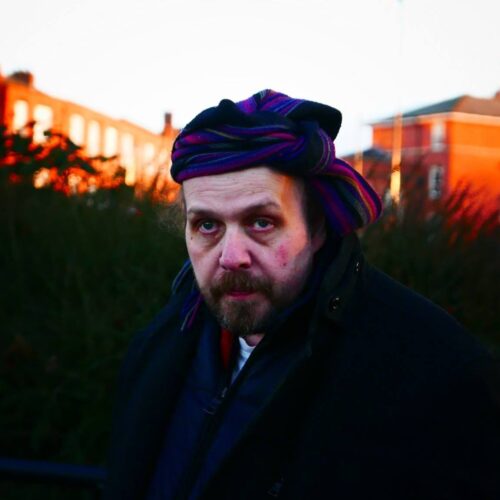
The Threepenny Opera: Musical Grit

If you’re unfamiliar with the work, let me introduce you to an absolute gem of the musical world, that of Kurt Weill and Bertolt Brecht’s Die Dreigroschenoper (The Threepenny Opera). Premiered on 31st August 1928 in Berlin, this piece of musical theatre is a treasure trove for study and should be of particular interest to music students.
Without getting too deeply into the background, it is a scathing political critique of the capitalist system loosely based on John Gay’s The Beggar’s Opera from two centuries previous. I would urge any student to do some research and reading into the work and its creation, it offers a wealth of interesting points on not just musical, but also social, philosophical and political aspects.
Focussing here on the music, The Threepenny Opera is a wonderful fusion of classical, jazz, operetta and Weimar styles which really is part of Weill’s unmistakeable trademark sound. We find dissonance and complex harmony hidden under popular and very singable tunes, over an eclectic mix of styles including tangos, jazz, 1920s dance music and also plenty of little hidden classical gems to spot such as the fugue in the Overture.
Weill’s orchestration is interesting in itself, and a marvel of economy at that. Any composers would do well to look at what can be achieved with few instrumentalists. Many players can play several instruments and it is well worth asking potential collaborators what they can play and write in changes of instrument in your compositions. This is referred to as ‘doubling’ so, for instance, many saxophonists can play alto, tenor or soprano saxophones, or perhaps a clarinet as well. You may well find even more unlikely combinations which expand an ensembles capability, orchestrationally, creating a wider, richer and more unusual palette. Weill takes this a step further in The Threepenny Opera. It is scored for seven instrumentalists playing 23 instruments!
Player 1) Alto Saxophone, Flute, Clarinet, Baritone Saxophone
Player 2) Tenor Saxophone, Soprano Saxophone, Bassoon, Bass Clarinet
Player 3) Trumpet
Player 4) Trombone, Double Bass
Player 5) Banjo, Cello, Guitar, Hawaiian Guitar, Mandolin, Bandoneon
Player 6) Timpani, Percussion, Trumpet
Player 7) Harmonium, Celesta, Piano
In the subsequent adaptation of the work into English by Marc Blitzstein, and its debut on Broadway, I gather that the number of players was expanded to around 12 for various reasons, but still a good deal of doubling is required. I seem to recall reading once that Weill intimated that the performers need not be particularly good at their doubled instruments as it added to the realism and grittiness of the performance. If this is true it is a masterstroke, if not a risky gamble!
The rawness and sparse nature of the ensemble are, to me, what really delivers the impact in the piece. Take the Overture for example, here from the 1954 original Broadway cast recording, full of punch from the trombone and wonderful intricate part writing. From the moment it starts, it sets the scene perfectly:
Compare this to a recording of the Overture from the Suite, played by a symphony orchestra. The piece has truly had the rough edges smoothed off and perhaps even had its wings clipped:
The abrasive nature of the original orchestration really does match the abrasive libretto, and this is too small a blog to consider trying adding a synopsis of the plot, far better that you read, or listen to it, yourself. However, let’s take another song from the work, “Pirate Jenny”, here sung firstly, by Lotte Lenya in the original Broadway cast recording, then followed by Nina Simone. It’s that well written that I should imagine it’d be very difficult to smooth the rough edges and abrasiveness out!
Going back to the concept of ‘smoothing down the corners’, probably the most famous song from this work is the best example, namely ‘The Ballad of Mackie Messer’, now more commonly known as ‘Mack the Knife’. The original was a comparatively last minute addition to the show and introduces the protagonist, Macheath, a criminal and murderer who is certainly not to be messed with. Let’s compare two versions once more: Weill’s original and Bobby Darin’s souped-up big band hit single from the ‘50s.
Quite a difference I’m sure you’ll agree?! Whilst Louis Armstrong, Darin and Sinatra, amongst many others, took the song to new heights, I can’t say that I personally like the interpretation very much. I like the big band genre, but don’t think it fits the piece. The swing band orchestration and crooning singing style obliterates the importance of the lyrics. The grit of the original seems lost to an upbeat, happy, smooth and joyous feeling. I suspect the song has become that ingrained in the public’s ears that the lyrics are barely considered anymore. Take for example a few lines from the song:
“When the shark bites with his teeth, dear, scarlet billows start to spread;
Fancy gloves, though, wears Macheath, dear, so there’s not a trace of red!
On the sidewalk Sunday morning, lies a body oozing life…”
or perhaps
“From a tugboat by the river, a cement bag’s dropping down;
The cement’s just for the weight, dear; bet ya Mackie’s back in town!”
I find the contradistinction between the upbeat swing music and the subject matter, of a knife wielding murderer who is disposing of a body in a river, tied to a bag of cement, quite odd. Actually, it’s downright creepy seeing people sing along to it, smiling, tapping their feet in time.
Although it was probably not considered by Darin et al, I suppose that does fit it with the subversive themes of the original libretto, blurring the lines between what is good and bad, criminal or respectable. Still though, weird!
Back to the orchestration again: Unlike many of the Swing Band versions, which constantly shift upwards in key with each verse to maintain interest, Weill’s original stays in the same key, instead subtly changing parts of the orchestration each time. Take a listen to what the piano does during the song, especially from 2’30”. This reminds me of a point that Patric Standford once made, stating that if you are going to repeat something in your writing, unless you have a very, very good reason to restate exactly, aim to at least change even the smallest of details to keep things fresh. Something for students to keep in mind.
I have barely scratched the surface here, so take some time to research The Threepenny Opera, dig deeper, look at some of the scores (even the piano and vocal versions are quite eye opening) you will find a wealth of very interesting material out there, and a complex and interesting piece of musical theatre. A fantastic and diverse study for your listening and reflective logs. Weill’s other theatrical works as well as his classical and symphonic writing is well worth a listen too. Enjoy.
I’ll leave you with my favourite from the work, the ‘Tango Ballad’ or ‘Pimp’s Ballad’ where we find the characters Macheath and Jenny reminiscing about their old relationship in quite a tongue in cheek fashion. Interesting points to look out for are the way Weill skilfully returns to the original key between verses, quite round-the-houses and compelling, and also one of the best sarcastic lines of the piece “and I would kick him in the teeth (meaning no harm)”!






Not a musical theory buff, but when I think of ‘The Threepenny Opera” I think of Lotte Lenya, and thinking of her reminds me of her singing ‘Surabaya Johnny’ from the Weill and Brecht in the opera ‘Happy End’ which for obvious reasons leads me to ‘Lulu’ by Berg (because it doesn’t have an ending) and that takes me straight back, via Jack the Ripper’ to ‘The Threepenny Opera’.
Actually, that’s a good recommended listening and reading list/cycle for students. Love it! 🙂